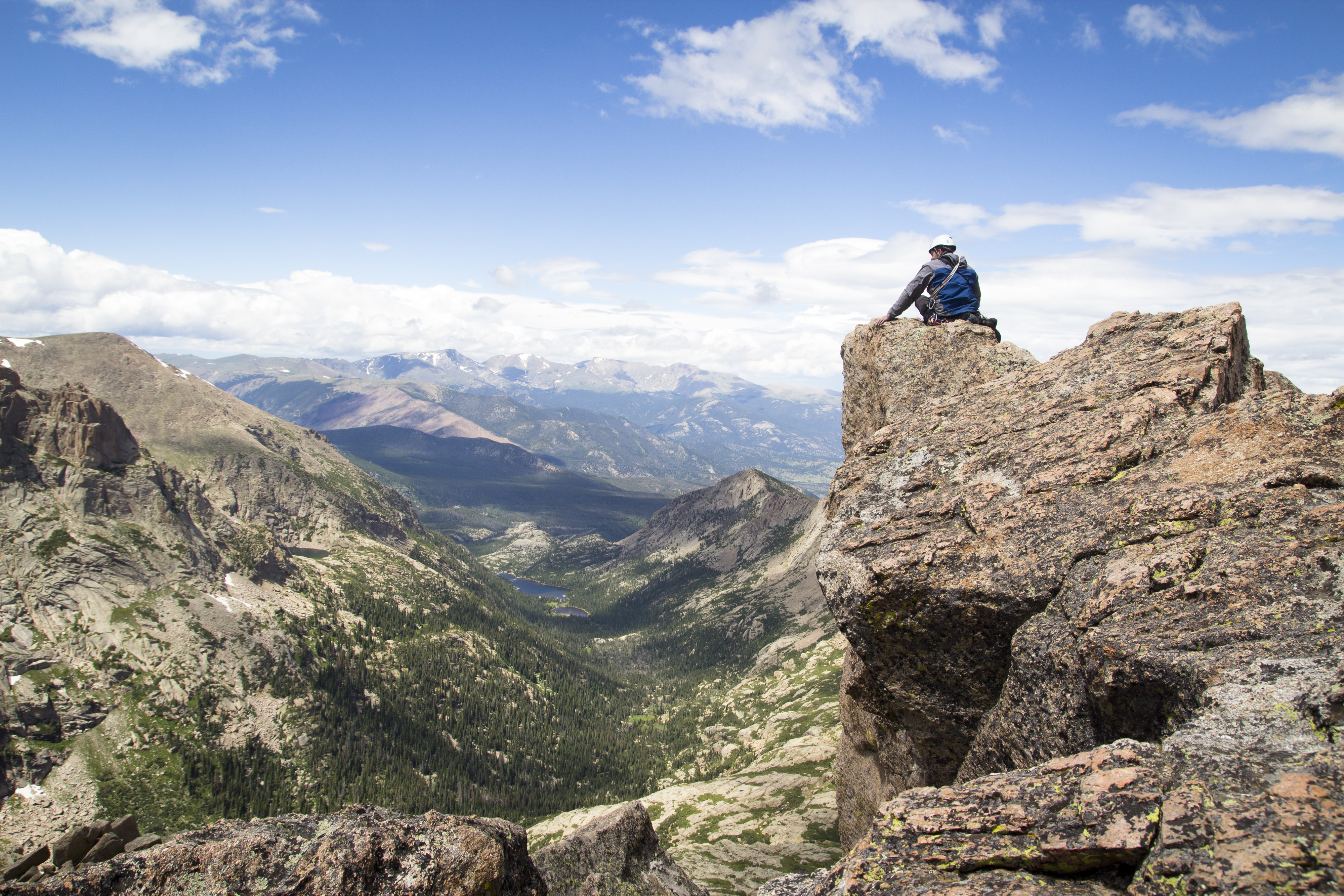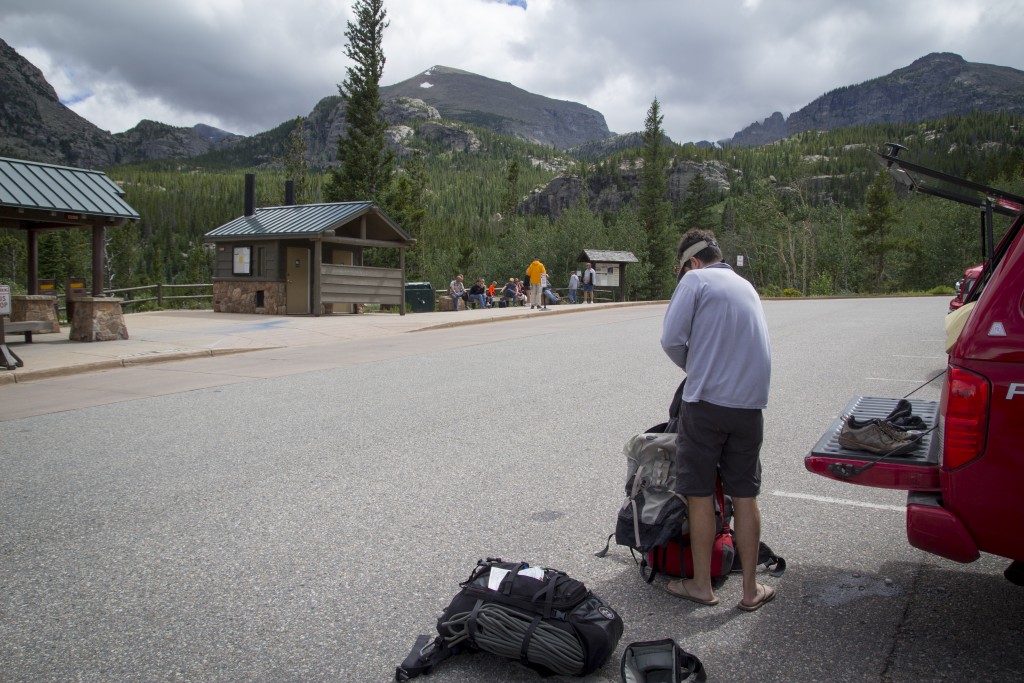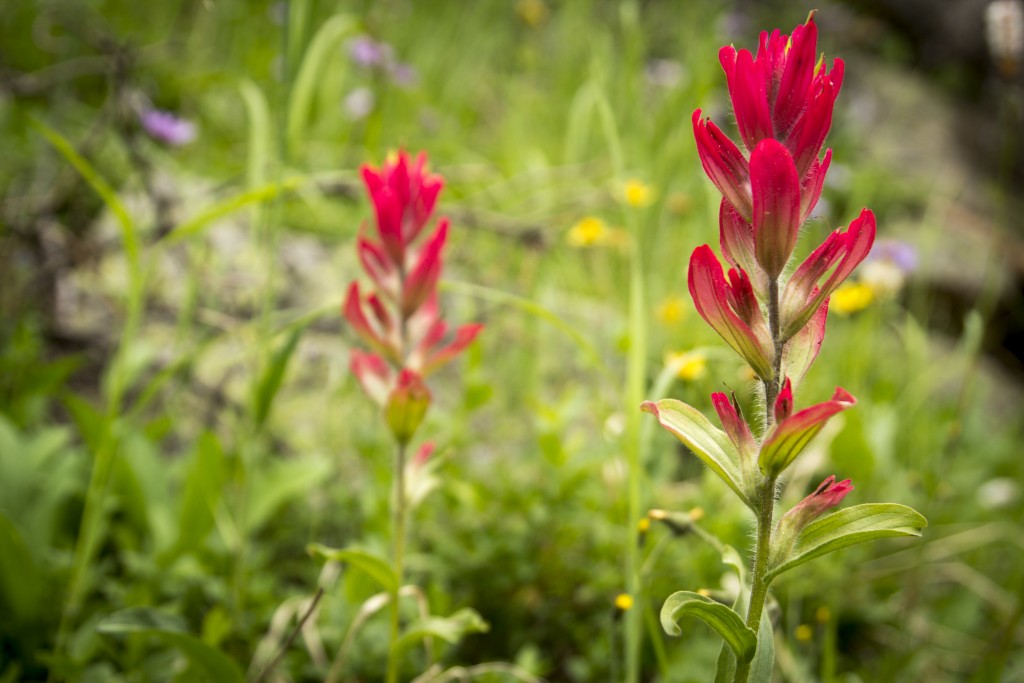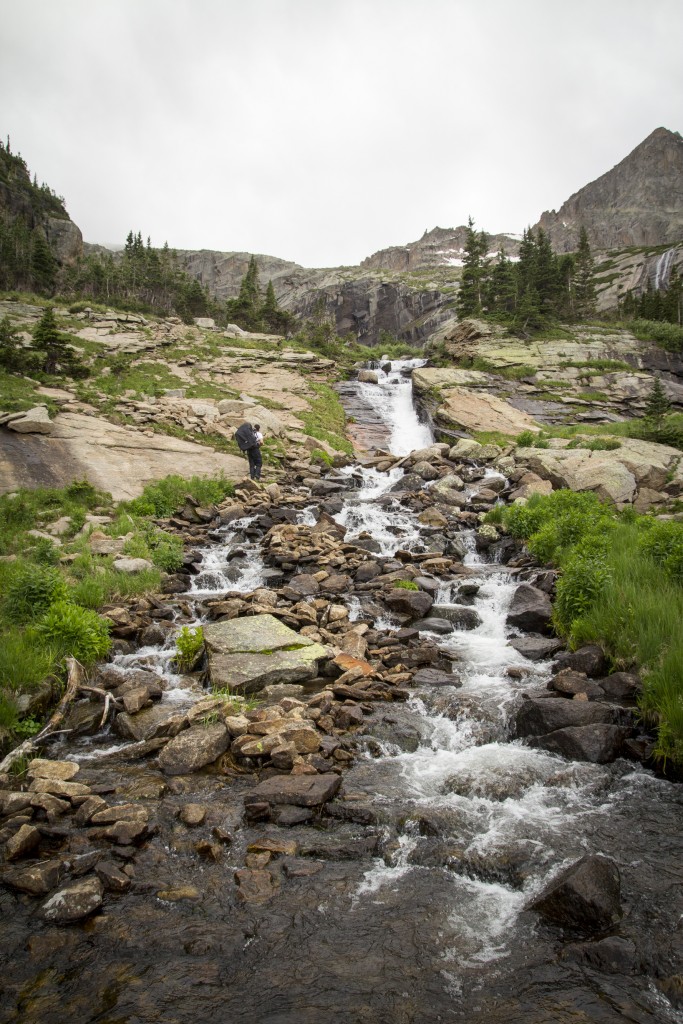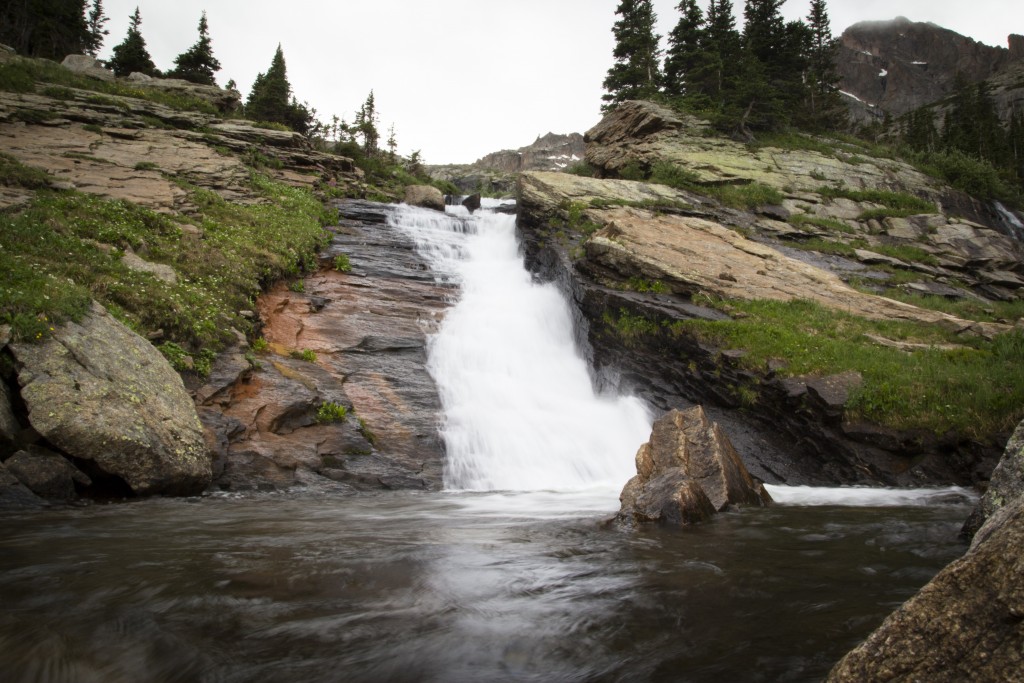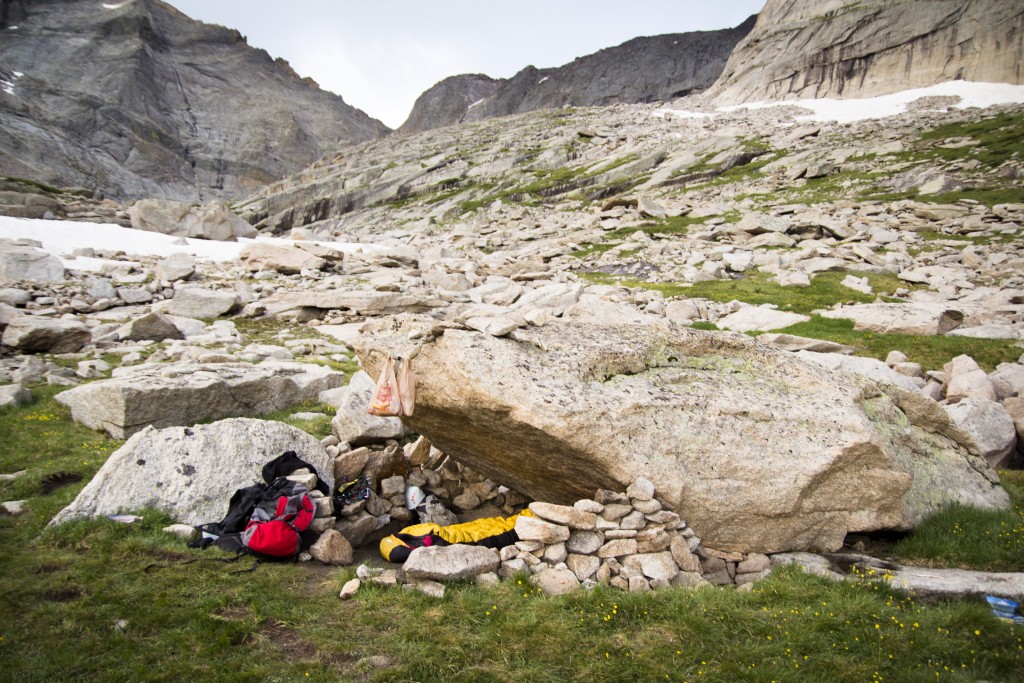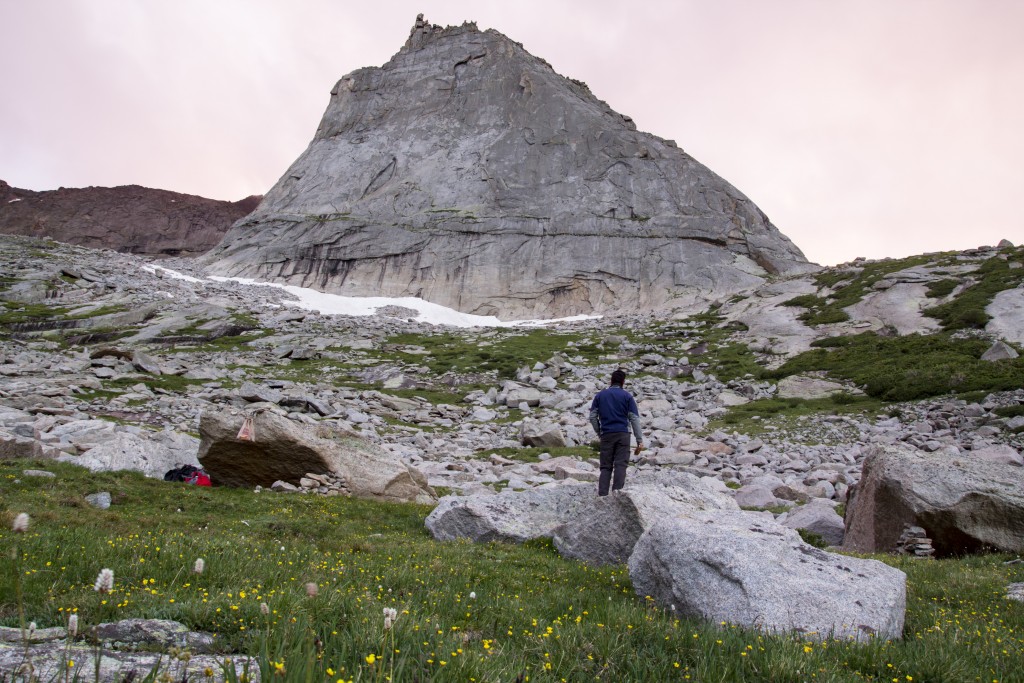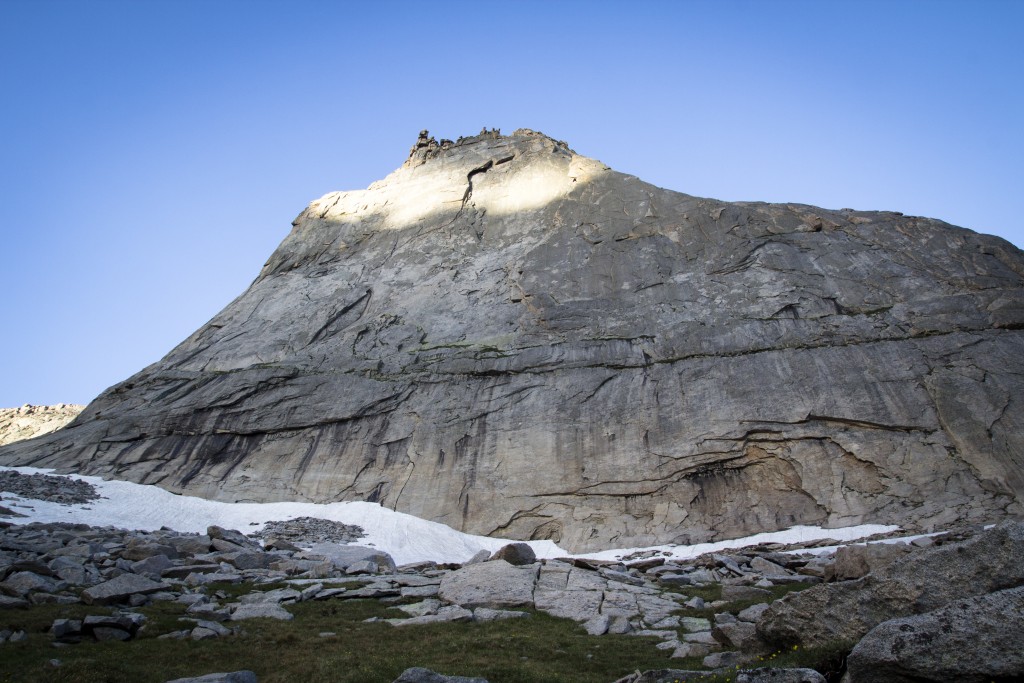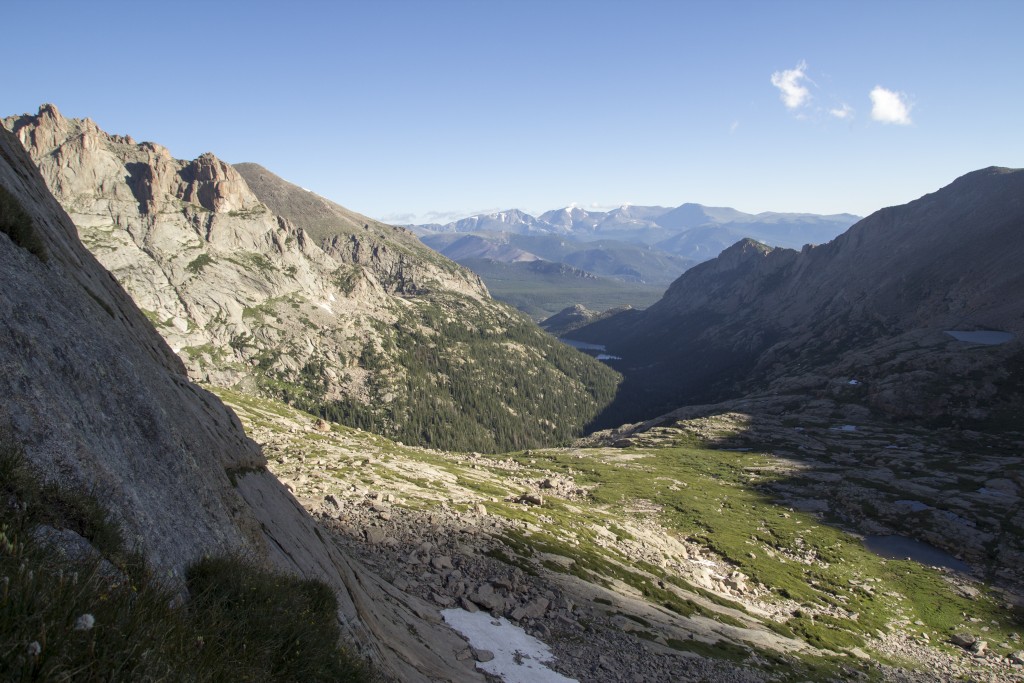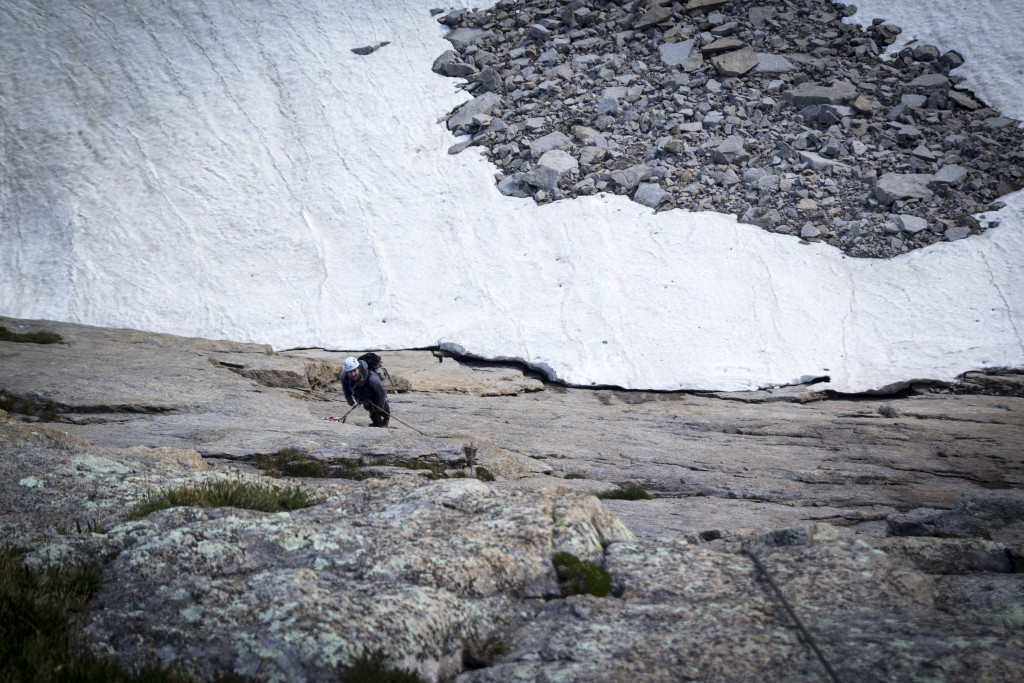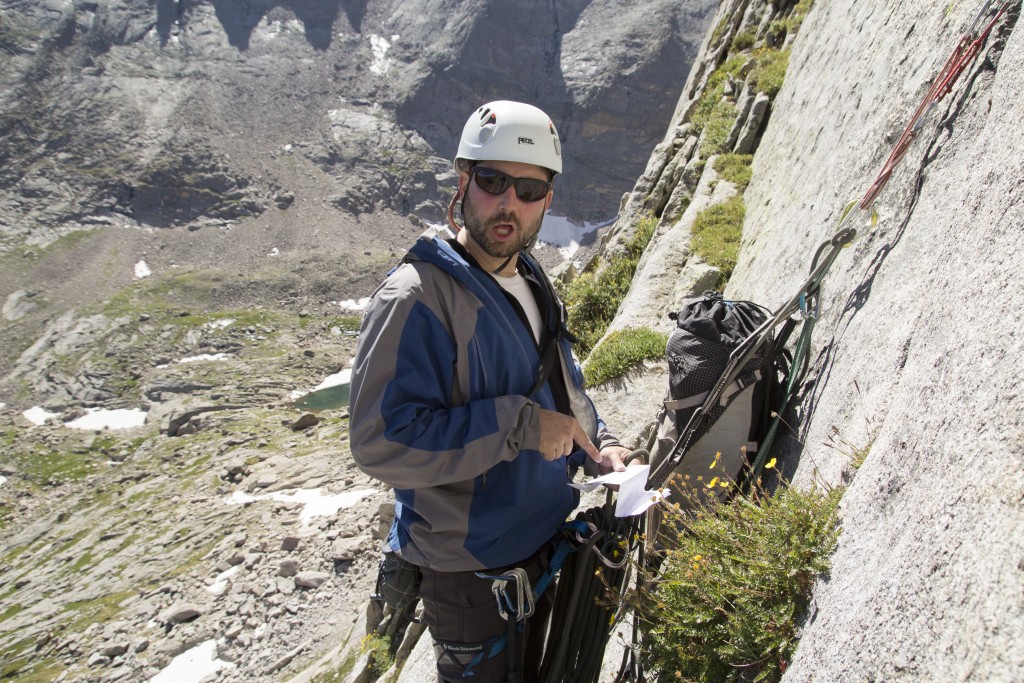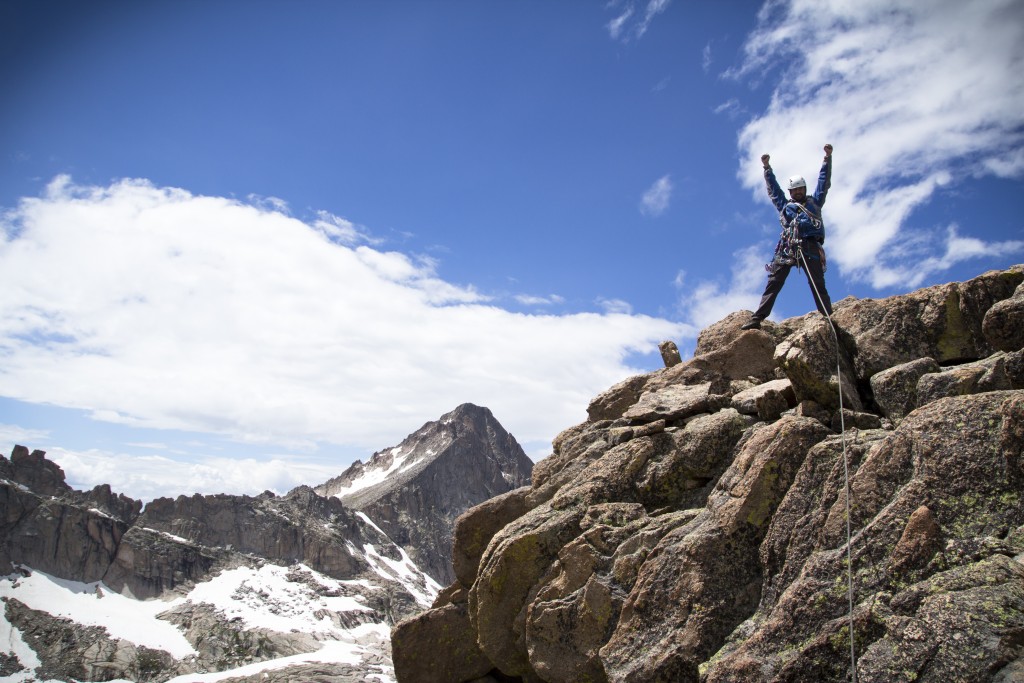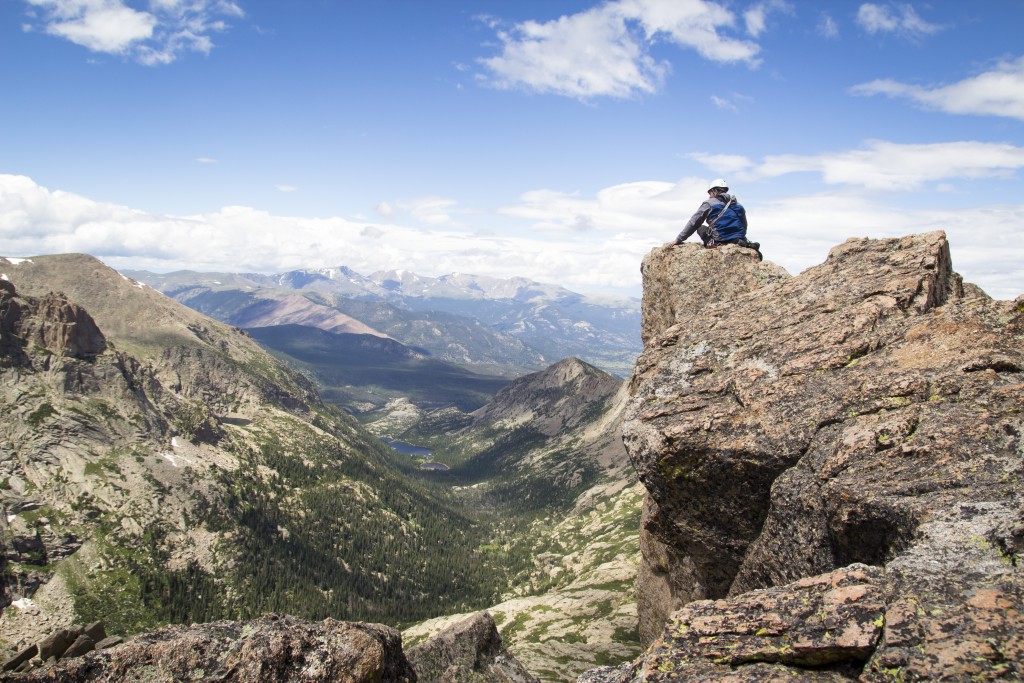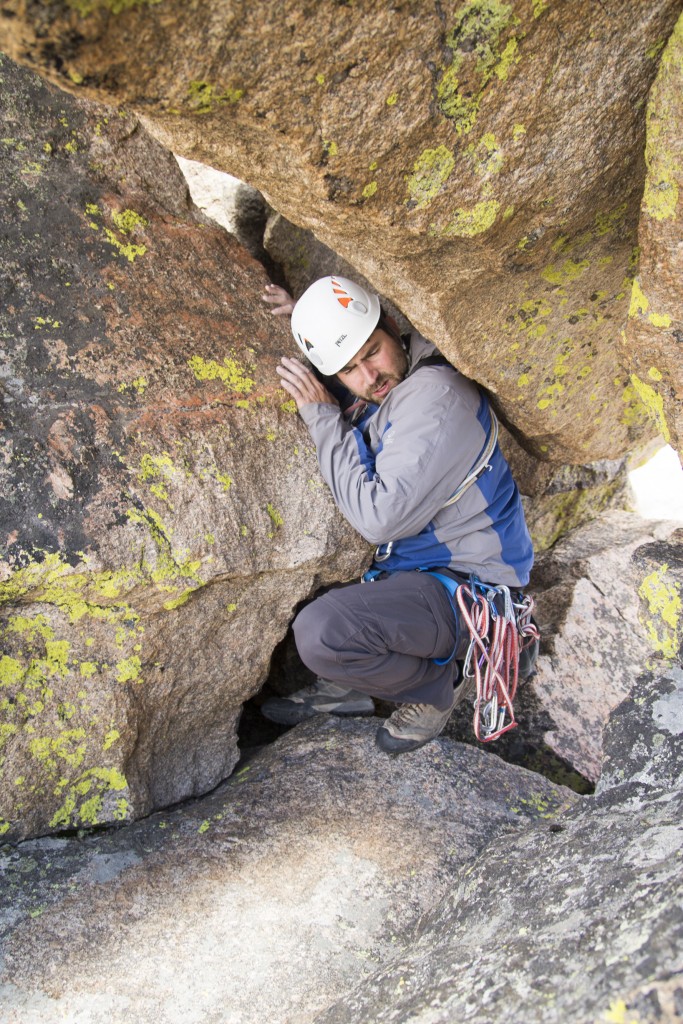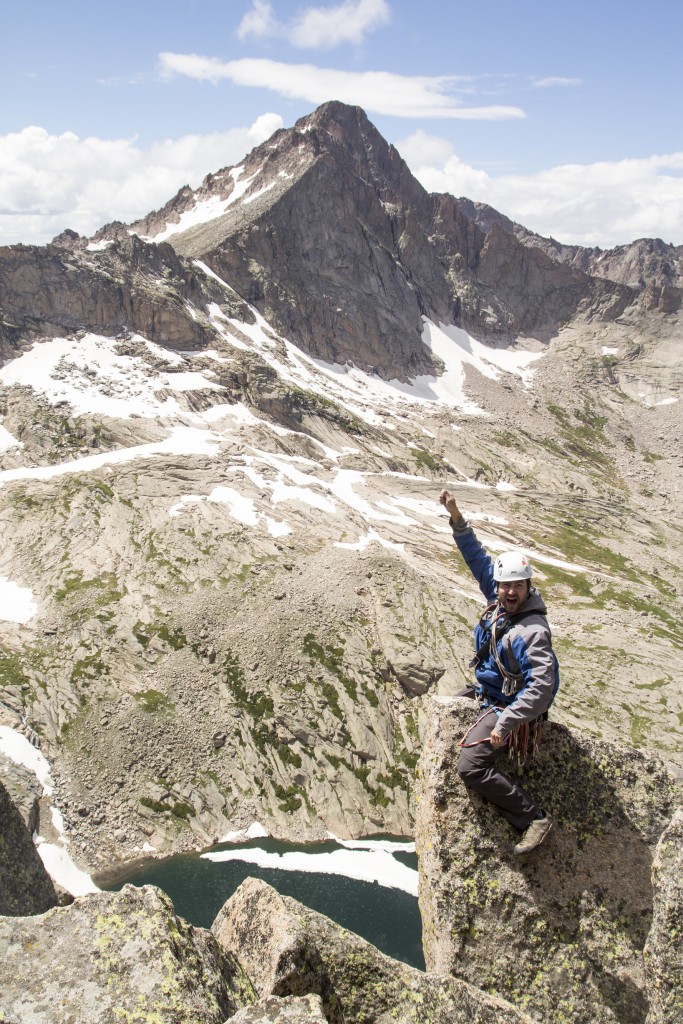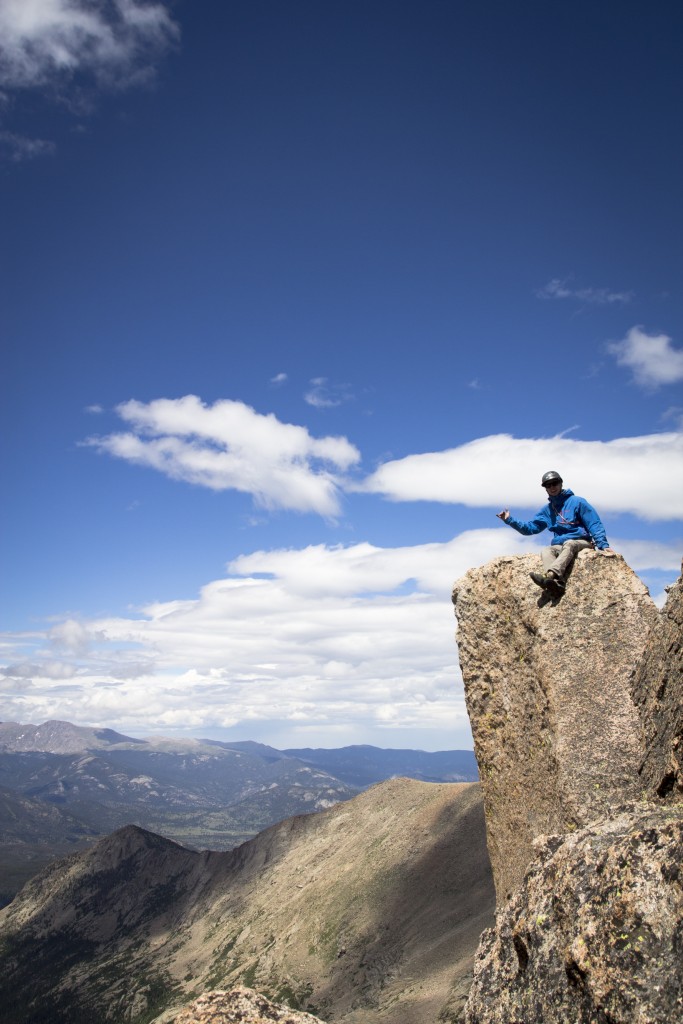A few weeks ago Andy and I set out for an alpine objective in Rocky Mountain National Park. An uncertain weather forecast was verified by a potent squall on our hike in as well as some ulcer-inducing mean clouds, graupel and eventually pea-sized hail as I belayed Andy through the crux roof pitch 600 feet off the ground. Syke’s Sickle is an iconic trad climb at the back of Glacier Gorge in Rocky Mountain National Park. This route meanders up 900 feet of beautiful granite, through a crux 5.10 roof (c’mon people that ain’t 5.9+) and then tops out on a dinner table sized summit at 12,575 feet.
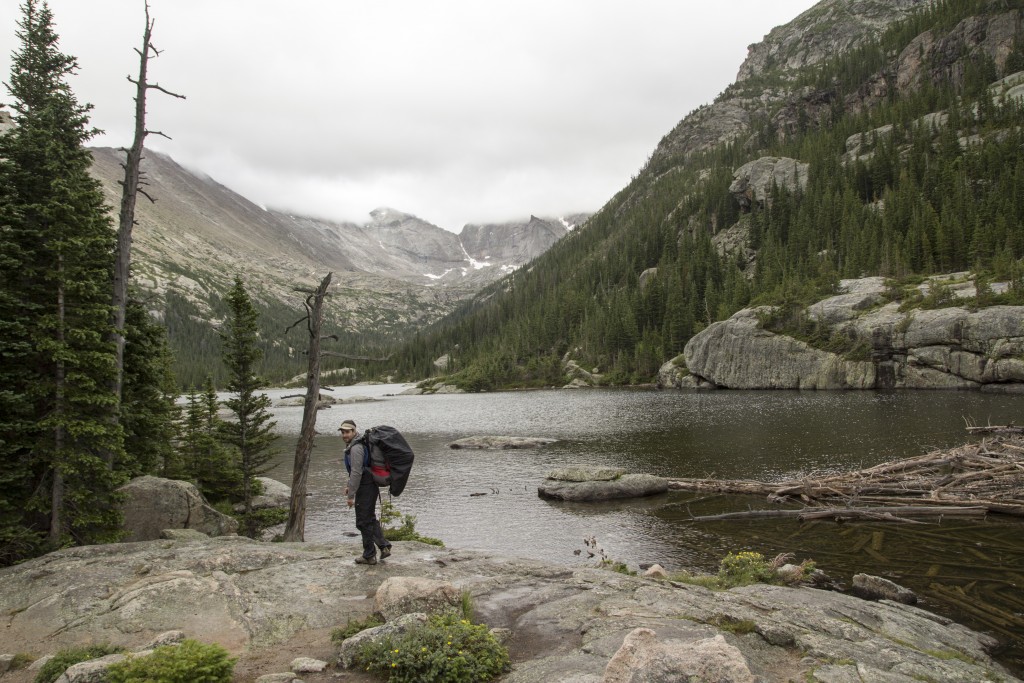
We got our first view of Spearhead from Mills Lake. Look just up and right at the point over Andy’s shoulder.
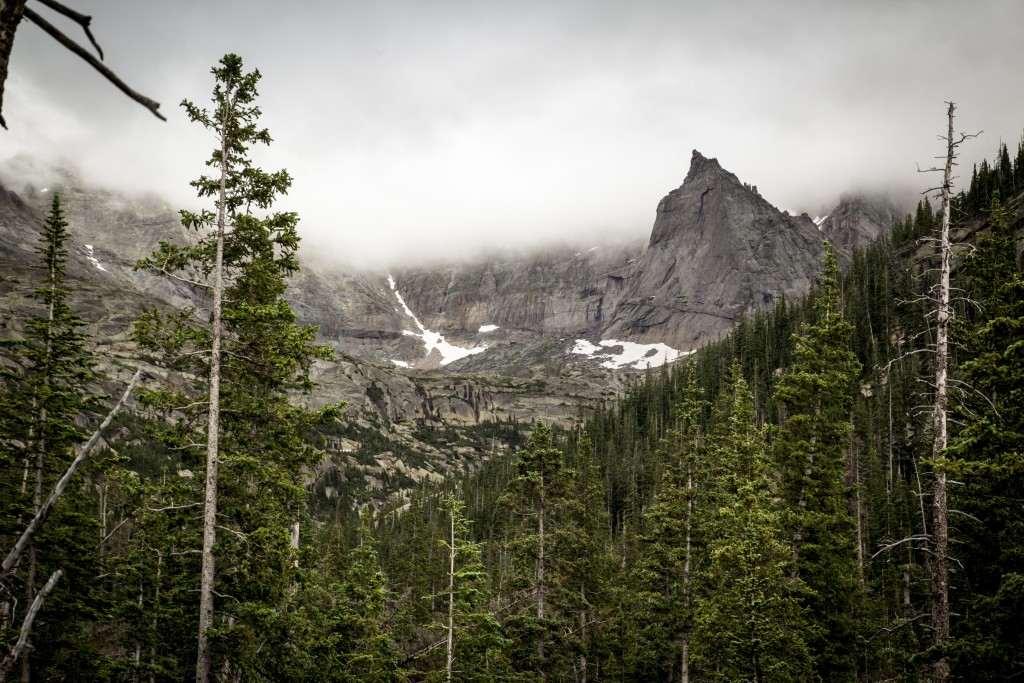
Spearhead. Our route ascended the middle of the steep main face into the dark “sickle” shaped overhang near the summit.
Andy has been hiking, climbing and exploring the park since he was a kid, so his local knowledge of the park and a lot of the historical landmarks really added to the experience. Our plan was to do a lazy hike in on Tuesday, bivy under a boulder at the base of the climb and summit by early afternoon the next day. Altitude and bulging overnight packs in addition to a rope and climbing gear weighed heavy on our knees on the way up, but we found a nice bivy boulder just in time to catch a beautiful light show as the sun set behind our objective.
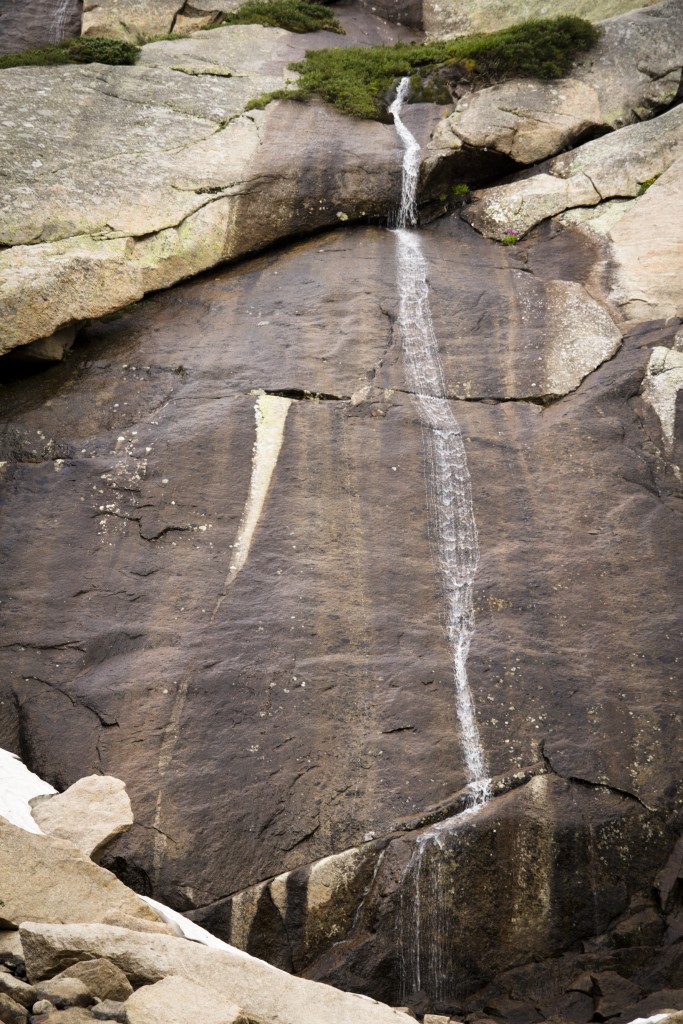
Hauling my camera up the trail and on the route was a bit of a pain in the ass but it was a nice to have to capture the beautiful scenery.
A chilly morning of coffee and rehydrated breakfast, a quick visit to the wag bag and we were hiking to the base of Syke’s. The boulder field dwindled and we were chopping steps through the firm snow as the presence of the Spearhead grew and grew. The first couple pitches were eye opening. I don’t care what grade you climb in the mountains, the consequences of a misstep, bad fall or lapse of focus will be serious. As we left the last pieces of rappel tat behind and struck out into the last few pitches to the crux roof we saw a fast approaching black cloud. Then the unmistakable trails of virga and the telltale gust front with chilling winds. At this point we needed to make an important decision; risk the chance of being in a dangerous thunderstorm on the exposed summit, or fix multiple rappels with the same danger. Ultimately or position just below the summit seemed to provide a more immediate route to safety and we opted to push on. After pulling the crux roof the skies darkened again and it started to hail. For a solid 10 minutes I sat anchored to the rock 600 feet off the ground as pea sized hail pelted my arms and bounced off the rock in a waterfall of ice. I tried to shrink under my helmet for protection as Andy turned the final hard moves and climbed the moderate hand crack to my belay. As he arrived the skies parted again and the worst of it was over.
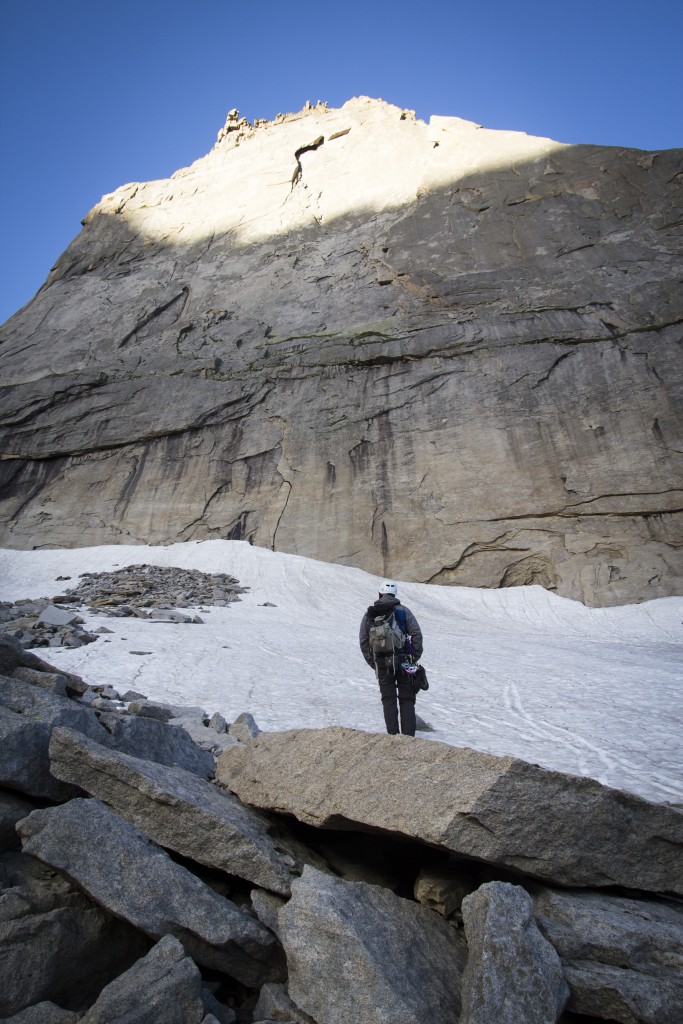
Although it was late July, the temperatures were quite chilly. This is just prior to chopping in steps in the snow to access the first pitch.
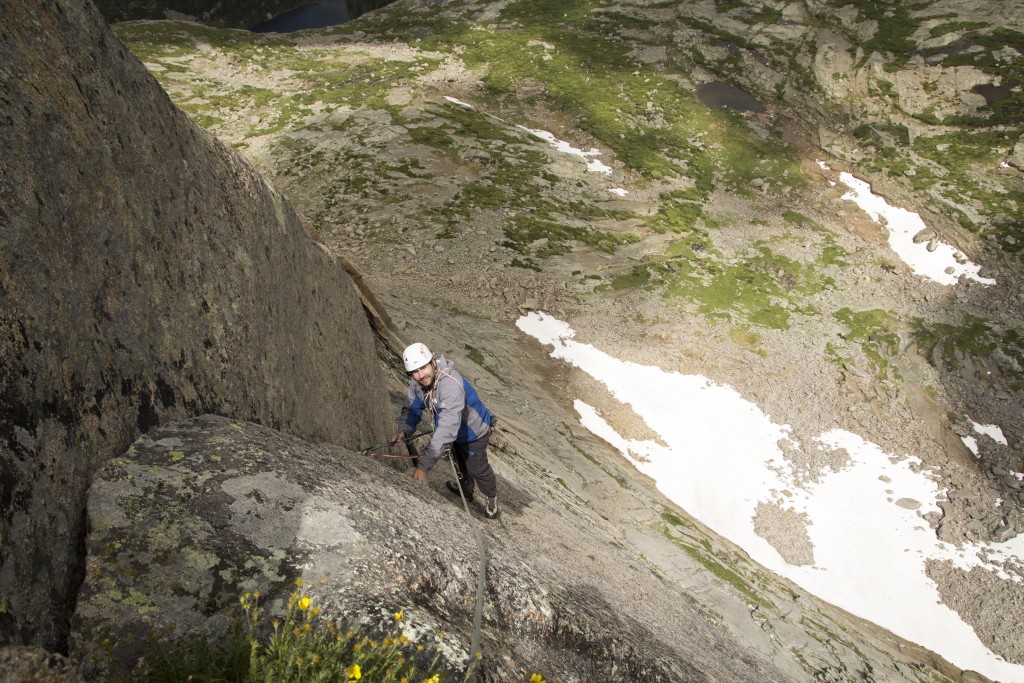
Andy pulled up from under the roof as the skies cleared and the hail began to melt. Better punch through the next couple pitches before it starts again!
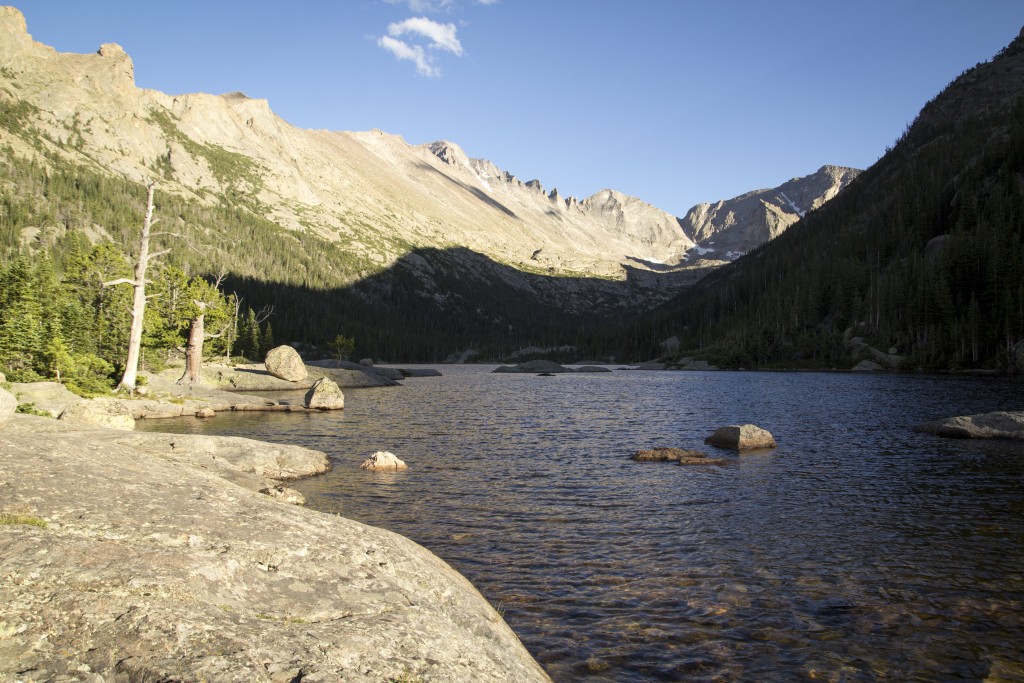
We had a stunning hike out in the golden light. Although we were totally gassed we took a moment to take in this view from Mills Lake.
Despite some strong gusts of wind, the skies cleared again, the sun shone and we even allowed ourself an extended stay at the summit of Spearhead to take a couple photos and soak in our surroundings. Some trouble with the descent beta delayed our downward progress and we drug ourselves back to our bivy boulder at about 4 p.m. with a 5 mile hike still on the afternoon agenda. Back at the car we had that feeling that only a slightly epic adventure in the mountains can foster. The anxiety and mental stress of an exposed alpine route was behind us. My fuzzy altitude brain began to clear and the cushions of the truck couldn’t have felt softer. The majority of the time I spend on rock is 100′ tall or less and often only an hour from the truck. The commitment and stark beauty of the position you can achieve in the mountains is intoxicating, but I am sure these trips take additional time of our lives. Fortunately for me though I was offered these kind words from an 8 year old girl at camp this week, “you look good for thirty” she said. Well.. maybe I can afford a couple more trips to the alpine after all.
